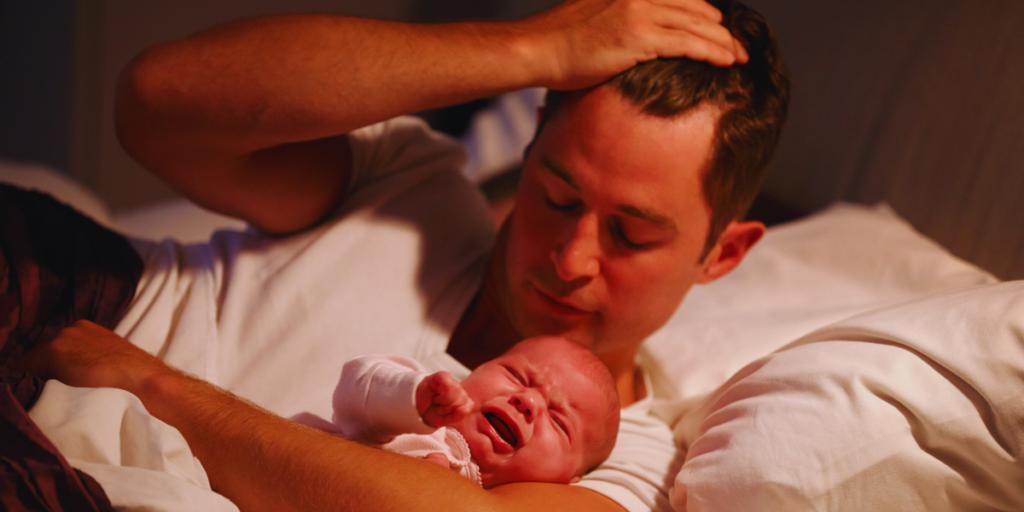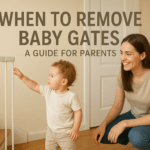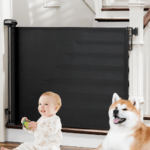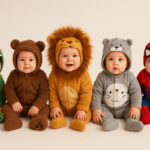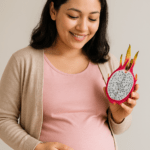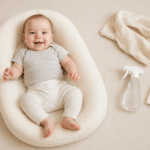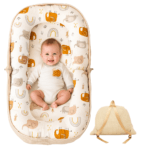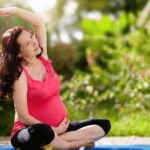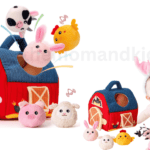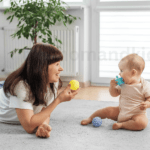Understanding the reasons behind a baby’s cry can be challenging for new parents. One common concern is whether a baby will cry if it is too hot at night. This article delves into the signs of overheating in infants, how to prevent it, and what to do if your baby gets too warm at night.
It’s often challenging for new parents to interpret the reasons behind a baby’s cries, especially at night. One common concern is whether a baby cries because they are too hot. Overheating can not only make a baby uncomfortable but also pose serious health risks, including an increased chance of Sudden Infant Death Syndrome (SIDS). Understanding the signs of overheating and maintaining an optimal sleeping environment is crucial for your baby’s well-being.
In this article, we’ll explore how to recognize if your baby is too hot, the ideal room temperature, and practical tips for keeping them comfortable throughout the night.
Why is overheating a Concern?
Overheating in infants is a significant concern for several reasons, primarily because it poses serious health risks. Babies cannot regulate their body temperature as efficiently as adults, making them more susceptible to overheating. One of the most critical risks associated with overheating is Sudden Infant Death Syndrome (SIDS), a condition where an otherwise healthy baby dies unexpectedly during sleep. Research has shown that infants who are too warm are at a higher risk of SIDS, as excessive heat can interfere with their ability to wake up or respond to breathing difficulties.
Read to know: Can Babies Die From Crying Too Long?
Additionally, overheating can lead to discomfort, dehydration, and heat rash in babies. Symptoms of overheating include sweating, red or flushed skin, and an elevated heart rate. Babies might also become irritable, lethargic, or have difficulty sleeping if they are too warm. Ensuring that your baby is dressed appropriately and in a comfortable sleeping environment is crucial for preventing these risks and promoting safe, restful sleep.
Importance of Understanding Baby Cries
Understanding why babies cry is crucial for their well-being and development. Crying is one of the primary ways infants communicate their needs, discomfort, and emotions. Recognizing the different types of cries can help parents respond appropriately and ensure their baby is comfortable and healthy.
- Communication of Needs: Babies cry to signal their needs, such as hunger, diaper changes, or sleep. Identifying these cues quickly helps parents address their baby’s needs, promoting security and trust.
- Health Indicators: Certain cries can indicate underlying health issues, such as pain or discomfort from colic, ear infections, or gastrointestinal problems. Early detection through understanding these cries allows for prompt medical attention.
- Emotional Development: Responding to a baby’s cries fosters emotional development. When parents consistently meet their baby’s needs, it helps build a foundation of trust and emotional security, which is crucial for healthy psychological growth.
- Preventing Overheating and Other Risks: Overheating is a significant risk factor for infants linked to Sudden Infant Death Syndrome (SIDS). Recognizing the signs of discomfort due to overheating, such as excessive crying, can help parents adjust the baby’s environment and clothing, ensuring their safety and comfort.
Signs of Overheating in Babies
Recognizing the signs of overheating in babies is essential to ensure their safety and comfort. Here are some common indicators that your baby might be too warm:
- Sweating: Excessive sweating, particularly on the baby’s head, can clearly indicate overheating. Babies might not sweat as visibly as adults, so check for damp hair or clothing.
- Red or Flushed Skin: Overheating can cause a baby’s skin to appear red or flushed. This is often most noticeable on the face, chest, or back.
- Rapid Breathing: If your baby is breathing faster than usual or has a rapid heart rate, it could be because it is too hot. This response is the body’s way of trying to cool down.
- Heat Rash: Also known as prickly heat, heat rash manifests as small red bumps on the skin, usually in areas that tend to get sweaty, like the neck, chest, or diaper area.
- Restlessness or Fussiness: Overheating can make babies uncomfortable, leading to increased fussiness or difficulty sleeping. They may cry more frequently or seem unusually irritable.
- Lethargy: Sometimes, a baby might appear unusually sleepy or lethargic, lacking energy and not responding as actively as usual.
- Warm to the Touch: It may be overheated if your baby’s skin feels noticeably warm, especially on the chest or back. Check these areas rather than the hands and feet, which can be calm even when the baby is warm.
How Babies React to Being Too Hot?
Babies are sensitive to temperature changes, and being too hot can cause discomfort and potential health risks. When a baby is overheated, they might become restless, irritable, or fussy. Their skin can appear flushed or red, and they may sweat excessively. In more severe cases, they can develop heat rash and small red bumps on the skin. Overheating can also lead to a dangerous condition called heat exhaustion or heat stroke, where symptoms include rapid breathing, a high heart rate, and, in extreme cases, vomiting or lethargy.
To prevent overheating, it’s essential to dress babies in lightweight, breathable clothing, keep their environment cool, and ensure they are well-hydrated. Parents and caregivers should be vigilant in hot weather or warm indoor settings, as babies cannot regulate their body temperature as effectively as adults. If a baby shows overheating, it’s crucial to cool them down by moving to a more relaxed area, removing excess clothing, and offering fluids if appropriate.
Will Baby Cry if Too Hot at Night?
Yes, a baby is likely to cry if it is too hot at night. Crying is a primary way babies communicate discomfort, including feeling too warm. When a baby is overheated, it may feel restless and uncomfortable, leading to crying as it tries to signal its distress. In addition to crying, other signs of overheating may include sweating, red or flushed skin, and rapid breathing. Babies might also become unusually irritable or have difficulty sleeping when it is too hot.
It is essential to monitor the room temperature and your baby’s clothing to ensure they are comfortable. A good rule of thumb is to dress your baby in one more layer than you would wear to be comfortable. If your baby continues to cry despite efforts to cool them down, it may be worth consulting a healthcare professional to rule out other causes.
What must you do If your baby cries too hot at night?
If a baby is crying due to being too hot at night, it’s essential to cool them down and ensure their comfort. Here are some measures you can take:
- Check the Room Temperature: Ensure the baby’s room is cool, ideally between 68-72°F (20-22°C). If needed, use fans or air conditioning to regulate the temperature.
- Adjust Clothing and Bedding: Remove any excess clothing or blankets. Dress the baby in lightweight, breathable fabrics like cotton. Use a light, breathable blanket or a sleep sack suitable for room temperature.
- Hydration: If the baby is old enough for fluids other than milk, offer small sips of water to help keep them hydrated. For younger infants, ensure they are getting enough breast milk or formula.
- Cool Down the Baby: To help lower the baby’s body temperature, use a damp, lukewarm washcloth to gently wipe the baby’s skin, especially around the neck, armpits, and groin.
- Monitor for Serious Symptoms: Look for signs of heat exhaustion, such as rapid breathing, vomiting, or extreme lethargy. If you notice these symptoms, seek medical attention immediately.
- Adjust the Environment: Consider using a fan in the room, but ensure it’s not blowing directly on the baby. If it’s safe, you can also leave a window slightly open to improve ventilation.
Read our post to know More about : How To Put A Baby To Sleep In 40 Seconds: A Soothing Slumber
Ideal Room Temperature for Babies
The ideal room temperature for babies is typically between 68°F and 72°F (20°C and 22°C). This range helps ensure that the baby is comfortable and safe, preventing them from becoming too hot or cold. Here are some additional tips:
- Use a Room Thermometer: This can help you monitor and maintain a consistent temperature in the baby’s room.
- Dress Appropriately: Dress your baby in lightweight, breathable clothing. Use a sleep sack or blanket that is appropriate for the room temperature.
- Avoid Overheating: Overheating can increase the risk of Sudden Infant Death Syndrome (SIDS). Keep the room well-ventilated and avoid over-bundling the baby.
- Nighttime Adjustments: If the temperature drops at night, you can add a layer, but be cautious not to overdress the baby.
- Signs of Comfort: A good indicator of the right temperature is if your baby is sleeping comfortably without sweating or shivering. You can check the back of their neck or chest to gauge if they feel too warm or cold.
How to Choose the Right Sleepwear?
Types of Sleepwear for Different Temperatures
- Warm Weather:
- Onesies or Bodysuits: Light and breathable, these are perfect for warm nights.
- Sleeveless Sleep Sacks: Provide comfort without overheating.
- Short Pajamas: Lightweight cotton pajamas with short sleeves and legs.
- Cool Weather:
- Long-Sleeved Pajamas: Opt for cotton or other breathable materials.
- Footed Pajamas: Keep your baby warm without the need for additional blankets.
- Thermal Sleep Sacks: Use a slightly thicker sleep sack for added warmth.
- Cold Weather:
- Layered Clothing: A onesie under a long-sleeved pajama set can provide extra warmth.
- Fleece Sleep Sacks or Pajamas: For cold nights, these provide insulation.
How is the Bedding and Sleep Environment?
- Breathable Fabrics: Use cotton sheets and blankets, as they are breathable and reduce the risk of overheating.
- Fitted Sheets: Always use a fitted sheet on the crib mattress to avoid loose bedding.
- Sleep Sacks: These are a safe alternative to blankets and help keep the baby at a consistent temperature.
- No Heavy Bedding: Avoid using heavy blankets, comforters, or quilts, as they can pose a suffocation risk and lead to overheating.
- Crib Safety: Keep the crib free of pillows, stuffed animals, and bumper pads.
Monitoring Your Baby’s Temperature
- Feel the Baby’s Skin: Check the baby’s back, neck, or chest to gauge their temperature. They should feel warm, not hot or cold.
- Room Thermometer: Use this to monitor and maintain the room temperature.
- Digital Thermometer: This is for more accurate readings, especially if you suspect a fever.
Adjusting Room Temperature
Use of Fans and Air Conditioning
- Fans are useful for circulating air but avoid direct airflow on the baby. Oscillating fans can help disperse cool air evenly.
- Air Conditioning: Can be used to maintain a stable, comfortable temperature. Ensure it doesn’t make the room too cold.
Safe Practices for Room Ventilation
- Window Ventilation: Open windows slightly to allow fresh air circulation, ensuring safety measures like screens are in place.
- Avoid Drafts: Keep the crib away from direct drafts to prevent the baby from getting too cold.
Hydration and Nutrition
- Breast Milk or Formula: Ensure babies under 6 months get enough breast milk or formula, as they are their primary source of hydration.
- Water: Offering older babies small sips of water can help keep them hydrated, especially in warm weather.
Signs of Dehydration
- Dry Mouth and Lips: Look for signs like chapped lips or a dry mouth.
- Reduced Wet Diapers: Fewer wet diapers than usual can indicate dehydration.
- Sunken Fontanelle: The soft spot on the top of the baby’s head may appear sunken.
- Lethargy: A lack of energy or unusual sleepiness.
When to Be Concerned About a Baby’s Temperature?
Recognizing signs that a baby might be too hot or cold is essential, as these can indicate serious health concerns. Here are key symptoms to watch for and when to contact a healthcare provider:
Recognizing Serious Symptoms
Overheating (Hyperthermia):
- Flushed or Red Skin: The baby’s skin may appear unusually red.
- Sweating: Excessive sweating can be a sign of overheating.
- Rapid Breathing or Heart Rate: This can indicate the body is struggling to cool down.
- Irritability or Unusual Fussiness: The baby may cry excessively or seem unusually agitated.
- Lethargy: A lack of energy or unusual drowsiness is concerning.
- Vomiting or Diarrhea: These can occur with heat exhaustion or heat stroke.
Chilling (Hypothermia):
- Cold, Pale Skin: The baby’s skin might feel cold to the touch or look pale.
- Shivering: Babies may shiver as a response to being cold.
- Lethargy or Weakness: The baby might seem unusually tired or weak.
- Difficulty Breathing: Cold environments can sometimes lead to breathing difficulties.
When to Contact a Healthcare Provider
Contact a healthcare provider immediately if your baby exhibits:
- High Fever: A rectal temperature of 100.4°F (38°C) or higher in infants under 3 months or 104°F (40°C) or higher in older babies.
- Signs of Dehydration: Dry mouth, sunken eyes, or fewer wet diapers than usual.
- Severe Lethargy or Unresponsiveness: The baby is difficult to wake or unusually quiet and unresponsive.
- Breathing Problems: Rapid, complex, or prolonged breathing.
- Seizures: Any convulsions or twitching that doesn’t stop.
- Persistent Vomiting or Diarrhea: Particularly if accompanied by fever or other symptoms.
Tips for Keeping Babies Cool at Night
Practical Advice and Solutions
- Maintain a Comfortable Room Temperature:
- Keep the room temperature between 68°F and 72°F (20°C and 22°C). Monitor the temperature with a room thermometer.
- Use Light Bedding and Clothing:
- Dress your baby in lightweight, breathable fabrics like cotton. Avoid heavy blankets; use a light sleep sack or single-layer blanket instead.
- Improve Air Circulation:
- Use a fan to help circulate air, but ensure it’s not blowing directly on the baby. If it’s safe and the weather allows, you can also keep the windows slightly open.
- Cool Bath Before Bed:
- A lukewarm bath before bedtime can help lower your baby’s body temperature and make them more comfortable.
- Hydration:
- Ensure your baby stays hydrated. Regular feedings are important for infants, and water can be offered to older babies as appropriate.
- Check for Overheating:
- Feel the back of your baby’s neck or chest to check for overheating. They should feel warm but not hot or sweaty.
- Use Appropriate Sleepwear:
- Opt for a breathable sleep sack or onesie. Avoid synthetic materials that can trap heat.
- Avoid Overcrowding the Crib:
- Keep the crib free of excessive blankets, pillows, or stuffed animals that could trap heat.
Common Mistakes to Avoid
- Overdressing:
- Avoid bundling your baby in too many layers. This can lead to overheating, which is a risk factor for Sudden Infant Death Syndrome (SIDS).
- Using Heavy Blankets:
- Heavy blankets can overheat a baby and pose a suffocation risk. Use lightweight, breathable options instead.
- Ignoring Room Temperature:
- Not monitoring the room temperature can lead to an environment that is too hot or cold. Use a thermometer to ensure it’s in the recommended range.
- Direct Fan or AC Airflow:
- While fans and air conditioning are helpful, they should not blow directly on the baby, as this can make them too cold or uncomfortable.
- Neglecting Hydration:
- In hot weather, it’s easy for babies to become dehydrated. Ensure they are well-fed and offer water to older babies.
- Covering the Baby’s Head:
- Babies lose heat through their heads. Avoid wearing hats or covering their heads while sleeping indoors, which can lead to overheating.
FAQs
What should my baby wear to sleep?
Dress your baby in lightweight, breathable clothing like a cotton onesie or sleep sack. The goal is to keep them comfortable without overheating.
How can I tell if my baby is too hot or too cold?
Check the baby’s back, neck, or chest. They may be too warm if they feel hot, sweaty, or have flushed skin. If their skin feels fantastic, especially their extremities, they may be too cold.
Is it safe to use a fan in the baby’s room?
Yes, a fan can help circulate air and keep the room cool. However, it should not blow directly on the baby and should be placed out of reach.
How is the room temperature appropriate?
Use a room thermometer to keep the temperature between 68°F and 72°F (20°C and 22°C). Adjust the temperature or clothing based on the reading.
Can I use a sleep sack in warm weather?
Yes, choose a lightweight sleep sack designed for warmer temperatures. These provide comfort without the risk of overheating.
What should I do if my baby wakes up sweaty?
Remove a layer of clothing, check the room temperature, and consider using a lighter sleep sack or blanket. Ensure the baby is not overheated.
Is air conditioning safe for babies?
Yes, air conditioning is safe and can help maintain a comfortable room temperature. Keep the baby away from direct drafts and monitor the room temperature.
Conclusion
Ensuring your baby’s comfort at night involves:
- Maintaining a safe and stable room temperature.
- Dressing them appropriately.
- Being mindful of signs of discomfort.
It’s important to be proactive in checking the baby’s environment and making necessary adjustments. Always prioritize safety by avoiding overheating and ensuring that the crib is free from excess bedding or objects.If you have any concerns about your baby’s temperature or comfort, don’t hesitate to consult with a healthcare professional for personalized advice. Remember, a comfortable baby is more likely to sleep well, which benefits both the baby and the parents.
